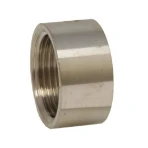-
Cangzhou Yulong Steel Co., Ltd.
-
Phone:
+86 13303177267 -
Email:
admin@ylsteelfittings.com
- English
- Arabic
- Italian
- Spanish
- Portuguese
- German
- kazakh
- Persian
- Greek
- French
- Russian
- Polish
- Thai
- Indonesian
- Vietnamese
- Zulu
- Korean
- Uzbek
- Hindi
- Serbian
- Malay
- Ukrainian
- Gujarati
- Haitian Creole
- hausa
- hawaiian
- Hebrew
- Miao
- Hungarian
- Icelandic
- igbo
- irish
- Japanese
- Javanese
- Kannada
- Khmer
- Rwandese
- Afrikaans
- Albanian
- Amharic
- Armenian
- Azerbaijani
- Basque
- Belarusian
- Bengali
- Bosnian
- Bulgarian
- Catalan
- Cebuano
- China
- China (Taiwan)
- Corsican
- Croatian
- Czech
- Danish
- Esperanto
- Estonian
- Finnish
- Frisian
- Galician
- Georgian
- Kurdish
- Kyrgyz
- Lao
- Latin
- Latvian
- Lithuanian
- Luxembourgish
- Macedonian
- Malgashi
- Malayalam
- Maltese
- Maori
- Marathi
- Mongolian
- Myanmar
- Nepali
- Norwegian
- Norwegian
- Occitan
- Pashto
- Dutch
- Punjabi
- Romanian
- Samoan
- Scottish Gaelic
- Sesotho
- Shona
- Sindhi
- Sinhala
- Slovak
- Slovenian
- Somali
- Sundanese
- Swahili
- Swedish
- Tagalog
- Tajik
- Tamil
- Tatar
- Telugu
- Turkish
- Turkmen
- Urdu
- Uighur
- Welsh
- Bantu
- Yiddish
- Yoruba

Nov . 12, 2024 22:30 Back to list
flanges and its types
An Overview of Flanges and Their Types
Flanges are essential components used in piping systems to connect two sections of pipes or to connect pipes to valves, pumps, and other equipment. These mechanical fittings provide a strong, leak-proof seal, making them critical in various industrial applications, including oil and gas, water supply, chemical manufacturing, and more. Understanding the different types of flanges and their applications is vital for engineers and technicians in the field.
What are Flanges?
A flange is a projecting flat rim, collar, or rib that is used to strengthen or stabilize an object, provide a means of attachment, or support a component. They are typically fabricated from metals such as stainless steel, carbon steel, and alloy steels, but can also be made from plastics or other materials, depending on the application requirements.
Flanges enable easy assembly and disassembly of piping systems, allowing for efficient maintenance and inspection
. They also play an essential role in ensuring that joints can withstand varying pressures and temperatures.Common Types of Flanges
1. Weld Neck Flange Weld neck flanges are characterized by their long neck, which facilitates a smooth transition between the flange and the pipe. This design helps to minimize stress concentrations and makes them ideal for high-pressure applications. They are commonly used in chemical plants and oil refineries where a robust seal is critical.
2. Slip-On Flange Slip-on flanges are designed to slide over the pipe, allowing for easy alignment before welding. Their simpler design reduces manufacturing costs, making them a popular choice in less demanding applications. However, they are less suitable for high-pressure systems due to the potential for leakage at the welded joint.
3. Blind Flange Blind flanges are used to close the end of a piping system. They do not have a hole in the center, making them ideal for sealing the ends of pipelines, equipment, or valves. Blind flanges are commonly used in testing scenarios, where a pressure test might be necessary before commissioning a system.
flanges and its types

4. Socket Weld Flange Socket weld flanges have a socket in which the pipe is inserted, before being welded around the joint. This type of flange is typically used in small diameter piping and high-pressure situations. Socket welds provide excellent strength and are resistant to certain types of mechanical stresses.
5. Lap Joint Flange Lap joint flanges are designed to be used with a stub end, allowing for easy alignment and flexibility during installation. They are not welded directly to the pipe but are slip-fit over it. This design is especially beneficial for applications requiring frequent disassembly and maintenance.
6. Threaded Flange Threaded flanges feature internal threads that allow them to be screwed onto the pipe, eliminating the need for welding. They are suitable for applications where welding is not feasible, but they are generally limited to lower pressure services due to the potential for leak paths and reduced structural integrity.
Considerations in Flange Selection
When selecting a flange for a specific application, it is crucial to consider several factors including
- Pressure and Temperature Ratings Each flange type has a defined rating that indicates the maximum pressure and temperature it can withstand without failing. - Material Compatibility The material of the flange must be compatible with the fluid being transported to prevent corrosion and ensure long service life. - Installation Conditions Some designs may be more conducive to specific environments, such as tight spaces, high vibration, or extreme temperatures.
Conclusion
Flanges play a crucial role in the integrity and efficiency of piping systems across various industries. Understanding the different types and their applications allows engineers and technicians to make informed decisions that enhance safety and performance. Whether integrating a new system or upgrading an existing one, proper flange selection is key to achieving durable and reliable connections. With a variety of types available, it is essential to evaluate all aspects of each option to ensure the best fit for your specific needs.
Latest news
-
ANSI 150P SS304 SO FLANGE
NewsFeb.14,2025
-
ASTM A333GR6 STEEL PIPE
NewsJan.20,2025
-
ANSI B16.5 WELDING NECK FLANGE
NewsJan.15,2026
-
ANSI B16.5 SLIP-ON FLANGE
NewsApr.19,2024
-
SABS 1123 FLANGE
NewsJan.15,2025
-
DIN86044 PLATE FLANGE
NewsApr.19,2024
-
DIN2527 BLIND FLANGE
NewsApr.12,2024
-
JIS B2311 Butt-Welding Fittings LR/SR 45°/90° /180°Seamless/Weld
NewsApr.23,2024











